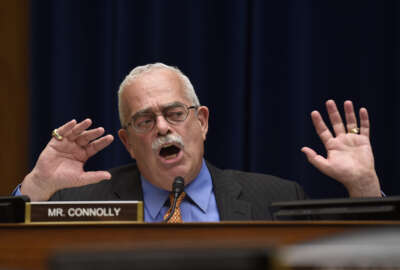
The congressional budget resolution is long, complicated and could impact your federal retirement. Federal News Radio explains how the resolution process works and...
The passage of the House budget resolution is one small step in a long and complicated legislative process that may spark significant changes to the current federal retirement system.
Or, it may not.
Republicans are serious about enacting a budget resolution this year, which they see as the vehicle to put their top legislative priority — tax reform — in motion.
Budget resolutions set spending levels under broad legislative categories and aren’t presented to the president. They can also include “reconciliation instructions,” which set the procedures for enacting parts of the resolution into law.
The House’s 2018 budget resolution does contain reconciliation instructions, which charge the House Oversight and Government Reform Committee to reduce mandatory spending by $32 billion over 10 years through reforms to civil service pensions.
But many more steps must happen if Congress wants to use the budget resolution process to offset new tax policies with cuts to federal retirement.
Federal News Radio has fielded questions from many concerned federal employees and retirees who want to know how this process works, what it means and when they can expect to see possible changes take effect.
Read about the process so far, where it’s headed next and how it could impact you. Mouse over each part of the flowchart for a more in-depth explanation about that step.
It’s unclear whether these proposals would impact current employees, current retirees, only future employees or all of the above. Here’s why.
The specific proposals haven’t been written yet, and until they are, we can only use existing written recommendations for what the House Oversight and Government Reform Committee’s own proposal would look like.
For example, the House Budget Committee’s report on the 2018 budget resolution describes three main recommendations:
Recommendations 1 and 2 don’t specify an impacted audience. Recommendation 3 would clearly apply only to future federal employees.
But the president’s budget proposal, however, makes different recommendations:
Proposals in the president’s budget request would impact current and future federal employees and retirees.
Again, it’s tough to say. Instead, know that both Congress and the Trump administration have an appetite to see current federal employees contribute more toward their pensions. They’d also like to move future employees off of the defined benefit pension and toward a defined contribution plan.
It’s unclear. So far, none of the proposals from the House Budget Committee or the president’s 2018 budget request detail concrete dates when retirement changes could go into effect.
As described above, the Senate still has to vote on the resolution, both chambers must conference and the House Oversight and Government Reform Committee would have to develop its own legislation and submit it as reconciliation legislation.
In theory, any proposal from the House oversight committee would include an effective date for any retirement changes to take place. Right now, there’s no indication of when lawmakers would like to see these changes take effect.
Yes. Consult your federal history books for more examples, but Congress has made similar attempts to offset discretionary spending with cuts to federal benefits.
Congress strongly considered raising employee pension contributions to offset increases in discretionary spending under the Bipartisan Budget Act of 2015.
Lawmakers could deploy similar tactics, especially if the final budget resolution more closely resembles the Senate’s version and doesn’t contain the same $203 billion in mandatory spending cuts that House Republicans are seeking.
Previous House budgets have targeted the Thrift Savings Plan’s G fund. Lawmakers could deploy a similar tactic and reduce the fund’s rate of return to draw up more savings. The G fund has been the most popular fund for TSP participants because it’s generally a low-risk option. The Federal Retirement Thrift Investment Board has said that the change would make the G fund practically worthless for TSP participants.
Copyright © 2024 Federal News Network. All rights reserved. This website is not intended for users located within the European Economic Area.
Nicole Ogrysko is a reporter for Federal News Network focusing on the federal workforce and federal pay and benefits.
Follow @nogryskoWFED

